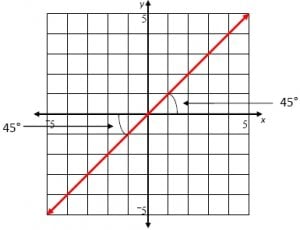joxxxelyn
Shiny_Rock
- Joined
- Jan 14, 2010
- Messages
- 146
I was just thinking about diamond spread today and how it is measured and evaluated, especially how there is a deep view that rounds tend to face up larger than many other shapes. First I considered that the circumference of a round is the same in all directions (a round diamond that is 5 mm across will be 5mm up and down- sparing any severe symmetry issures). So if they measure a round diamond across one way, you could spin the diamond and the measurements always come out the same. Stay with me here:
However, square shaped stones will always be shorter left to right and top to bottom than they will be diagonally. If you look at the image, you'll see the red line is actually longer than the left to right or top to bottom measurements (you can even measure your screen). And I'm under the impression that most squarish diamonds are measured using the black lines. Am I under the right assumption?
So, if most square or cushion diamonds are measured across (just left to right), the *real* spread of them would seem lower than it actually is. For things like Asscher, cushion, etc. we would need to do a more comprehensive measure of surface area (taking into account those longer diagonal measurements) in order to really see how much less spread they have than a round. If you actually calculated surface area on both rounds and square shapes, you'd see the squares probably don't actually face up much smaller. I think it'd be more influenced by things like depth, girdle thickness, angles and table size, culet, etc. Now clearly with more rectangular shapes, their long measurement balances this out a bit. But it would still be hard to accurately evaluate spread.
Just a thought.

However, square shaped stones will always be shorter left to right and top to bottom than they will be diagonally. If you look at the image, you'll see the red line is actually longer than the left to right or top to bottom measurements (you can even measure your screen). And I'm under the impression that most squarish diamonds are measured using the black lines. Am I under the right assumption?
So, if most square or cushion diamonds are measured across (just left to right), the *real* spread of them would seem lower than it actually is. For things like Asscher, cushion, etc. we would need to do a more comprehensive measure of surface area (taking into account those longer diagonal measurements) in order to really see how much less spread they have than a round. If you actually calculated surface area on both rounds and square shapes, you'd see the squares probably don't actually face up much smaller. I think it'd be more influenced by things like depth, girdle thickness, angles and table size, culet, etc. Now clearly with more rectangular shapes, their long measurement balances this out a bit. But it would still be hard to accurately evaluate spread.
Just a thought.




300x240.png)